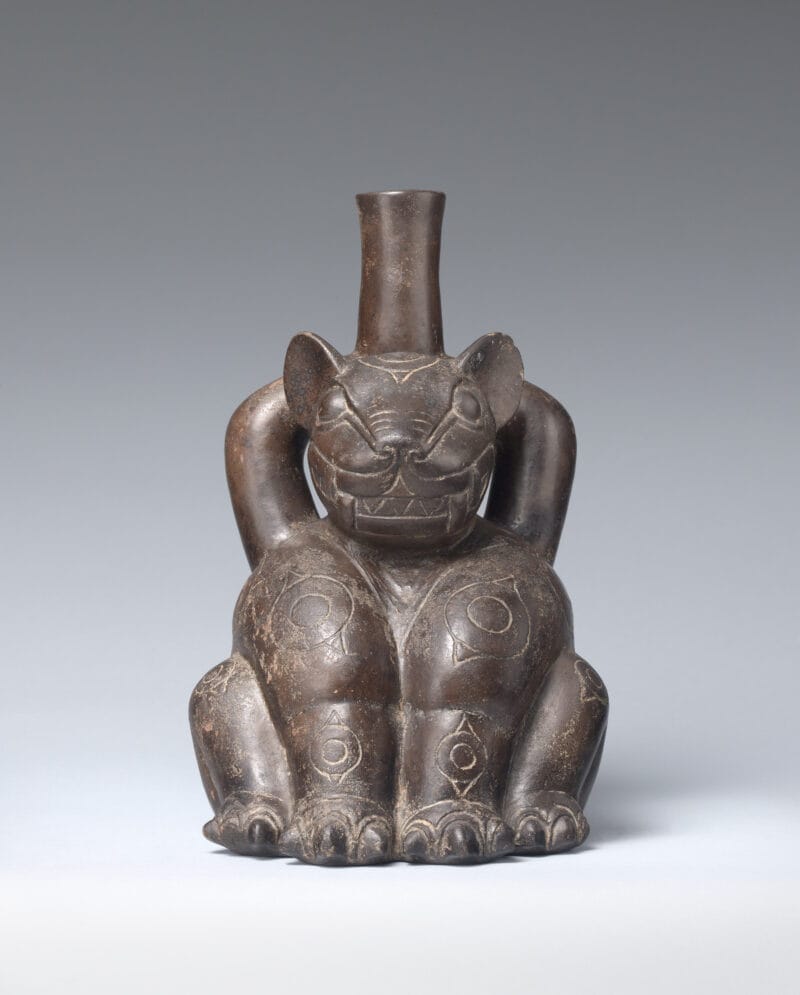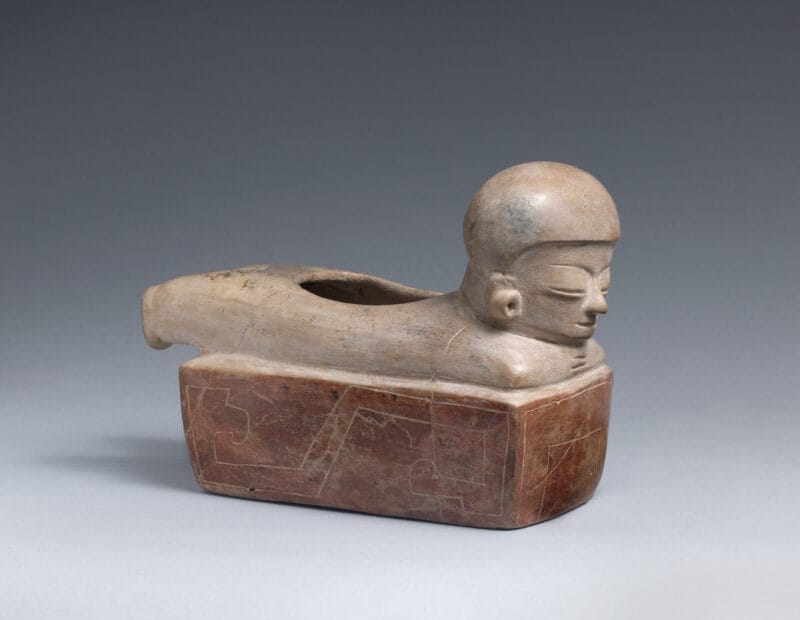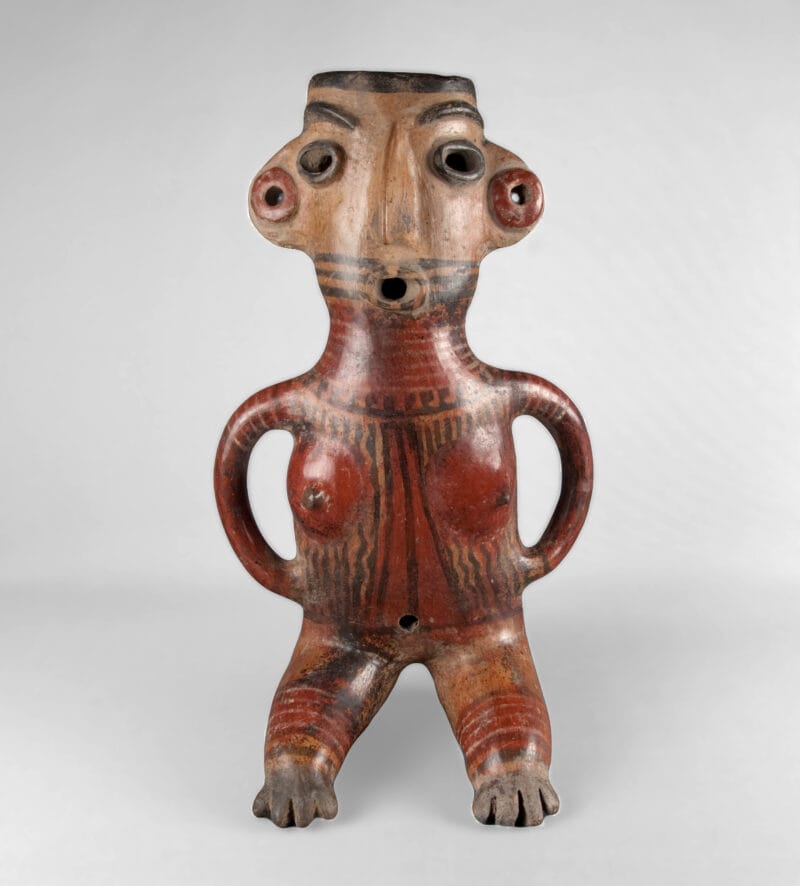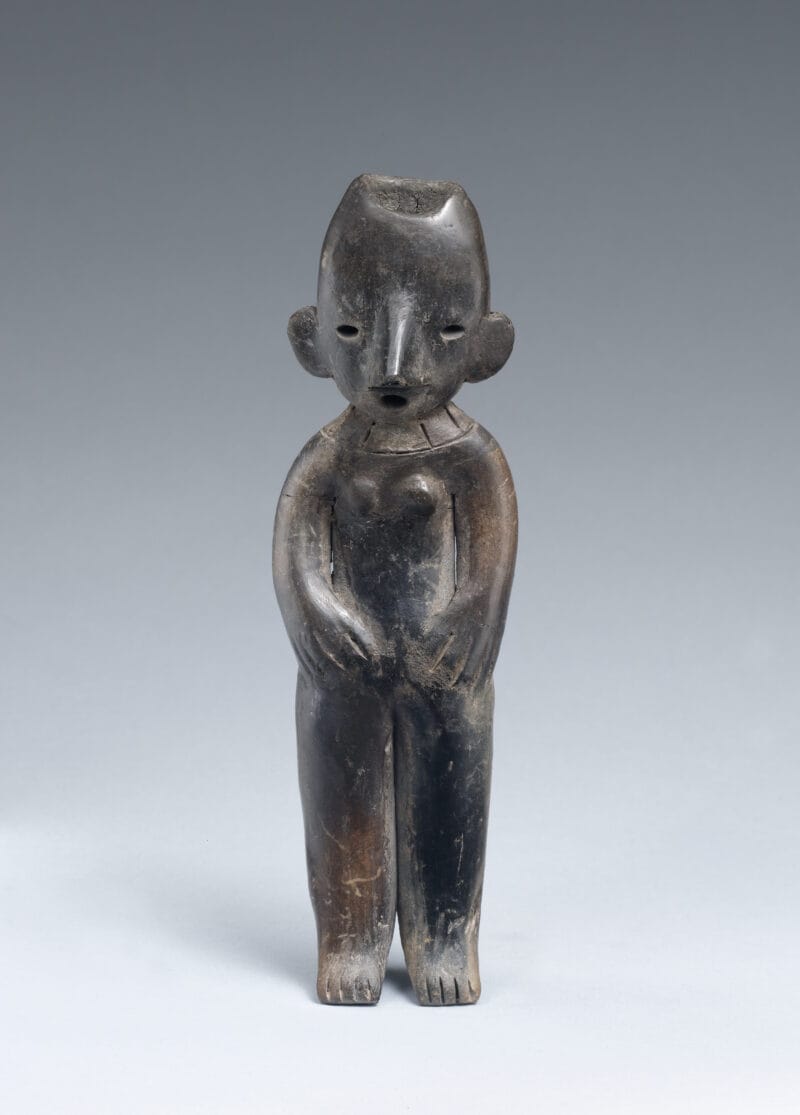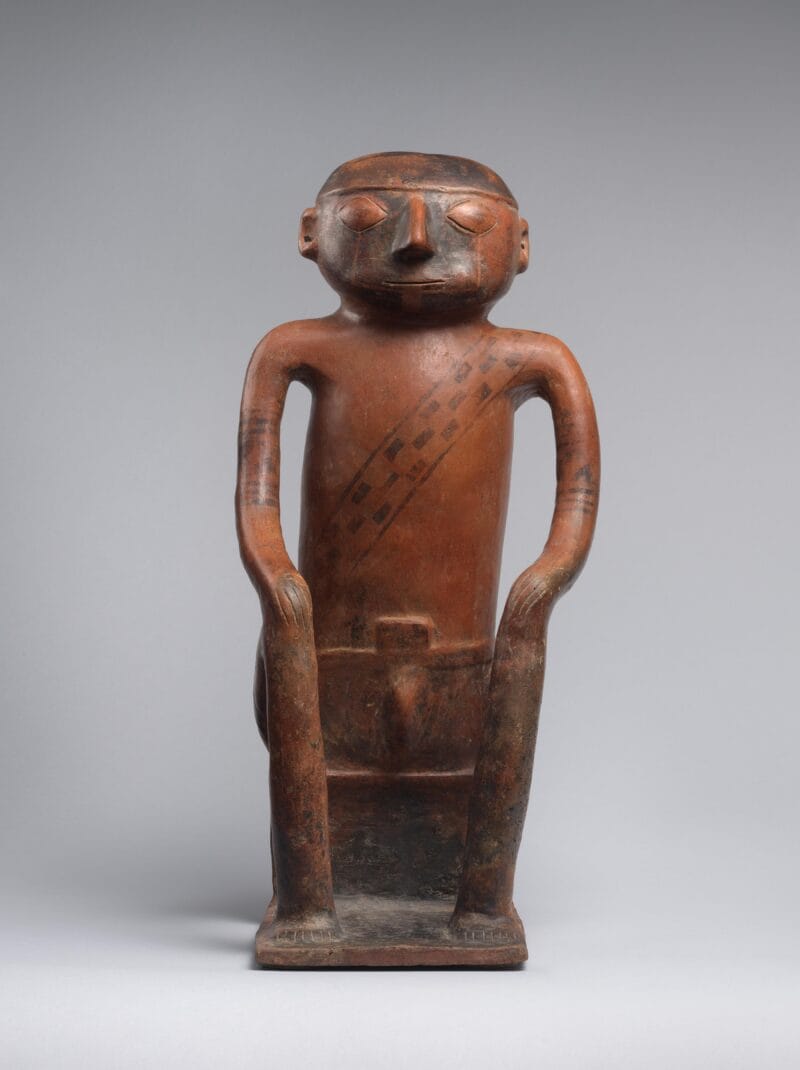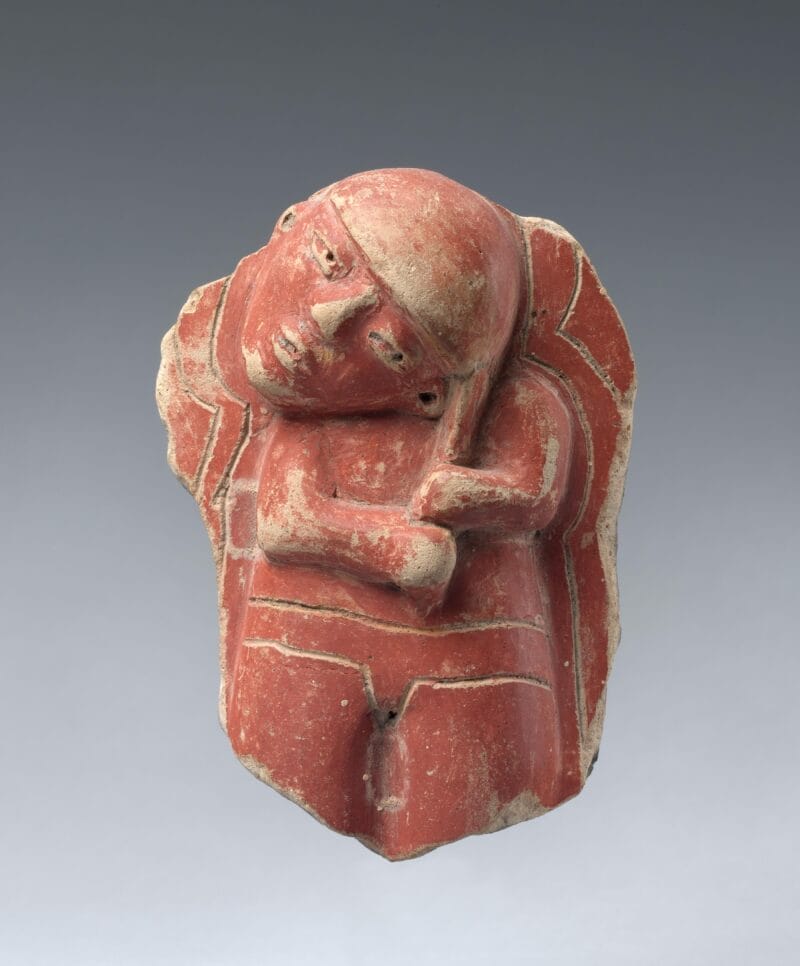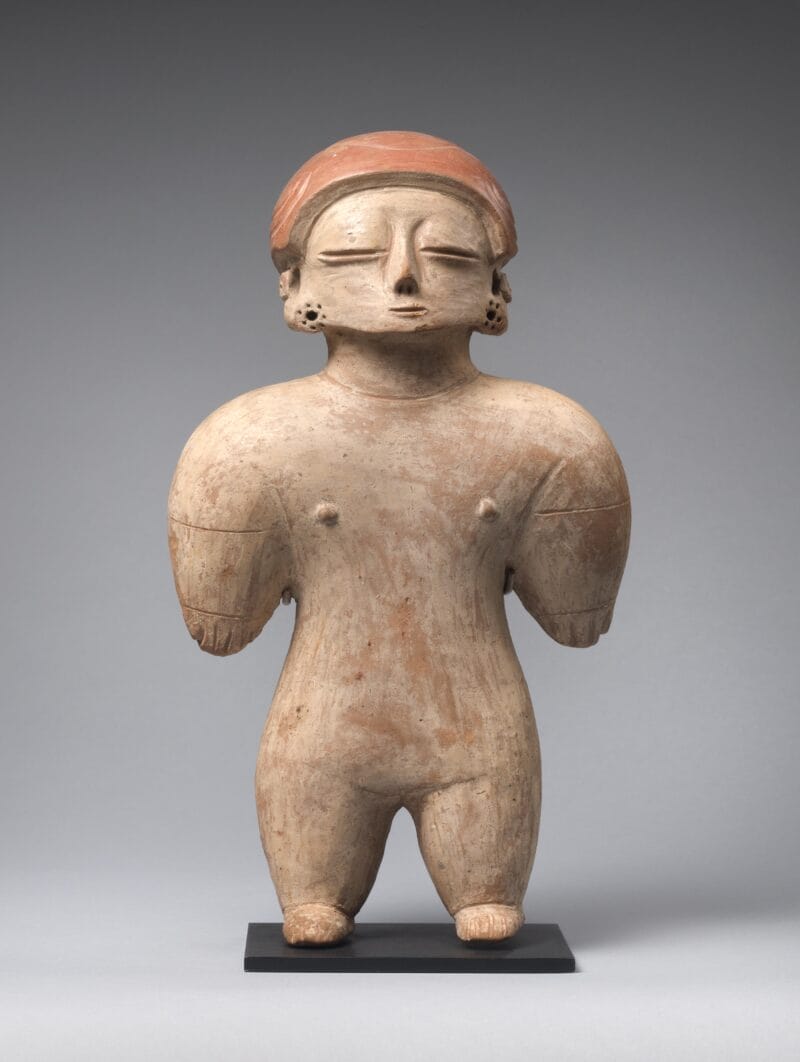
About the Object
Standing Chorrera figures such as this were probably created using a mold, a technique that the Chorrera may have pioneered within the Andes. This practice would influence other cultures, such as the Chavín and Moche, centered in modern Peru. The figure is painted in white, while the elaborate hairstyle, which shares a similar style to Valdivia “Venus” figures, has been painted a brilliant orange. Similar finds indicate the figure may have been used in rituals concerning sacrifices to secure divine aid.
Interestingly, while this work may depict a female and be linked with ideas of both cosmic and biological reproduction, further analysis indicates that the work may in fact represent an asexual figure or even a male, as Chorrera artistic forms approached sex and gender in a less rigid binary than many other cultures, especially those originating in the West.
Additional Information
About 500 years after the Valdivia culture disappeared from Ecuador following a terrible volcanic eruption, the Chorrera tradition, which endured from around 1000 BCE until around 355 BCE, arose within many of the same valleys and coastal plains as the Valdivia. Like other pre-colonial societies, the Chorrera relied on agriculture, cultivating maize and root crops to create food surpluses. These were controlled by local “chiefdoms,” which relied on such surpluses to create complex ceremonial architecture and for specialists to create ceramics like this example. The Chorrera also traded goods like spondylus shells for materials such as obsidian that could be found in the Andean highlands, or altiplano.
[Throckmorton Fine Art, New York, NY];
The Jan T. and Marica Vilcek Collection, 1999-2010;
Gift to The Vilcek Foundation, 2010;
Related Objects
You may also be interested in
Vilcek Foundation supports “Grounded in Clay: The Spirit of Pueblo Pottery”
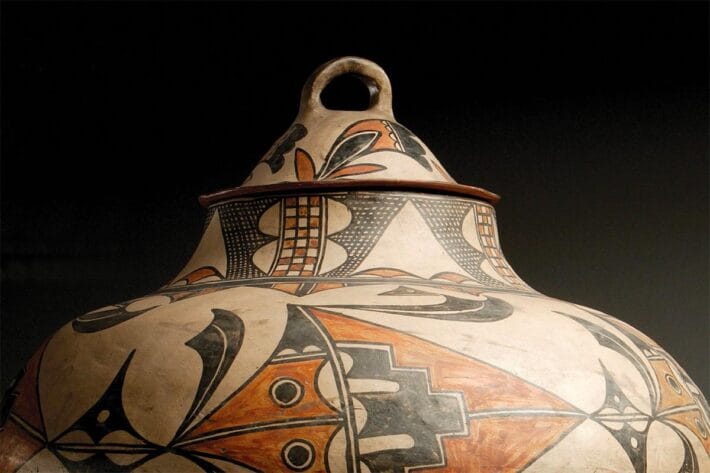
Meleko Mokgosi
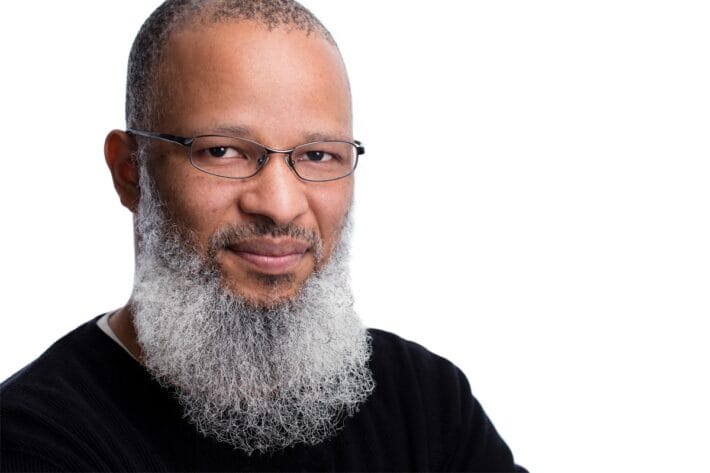
Fernando Camargo

